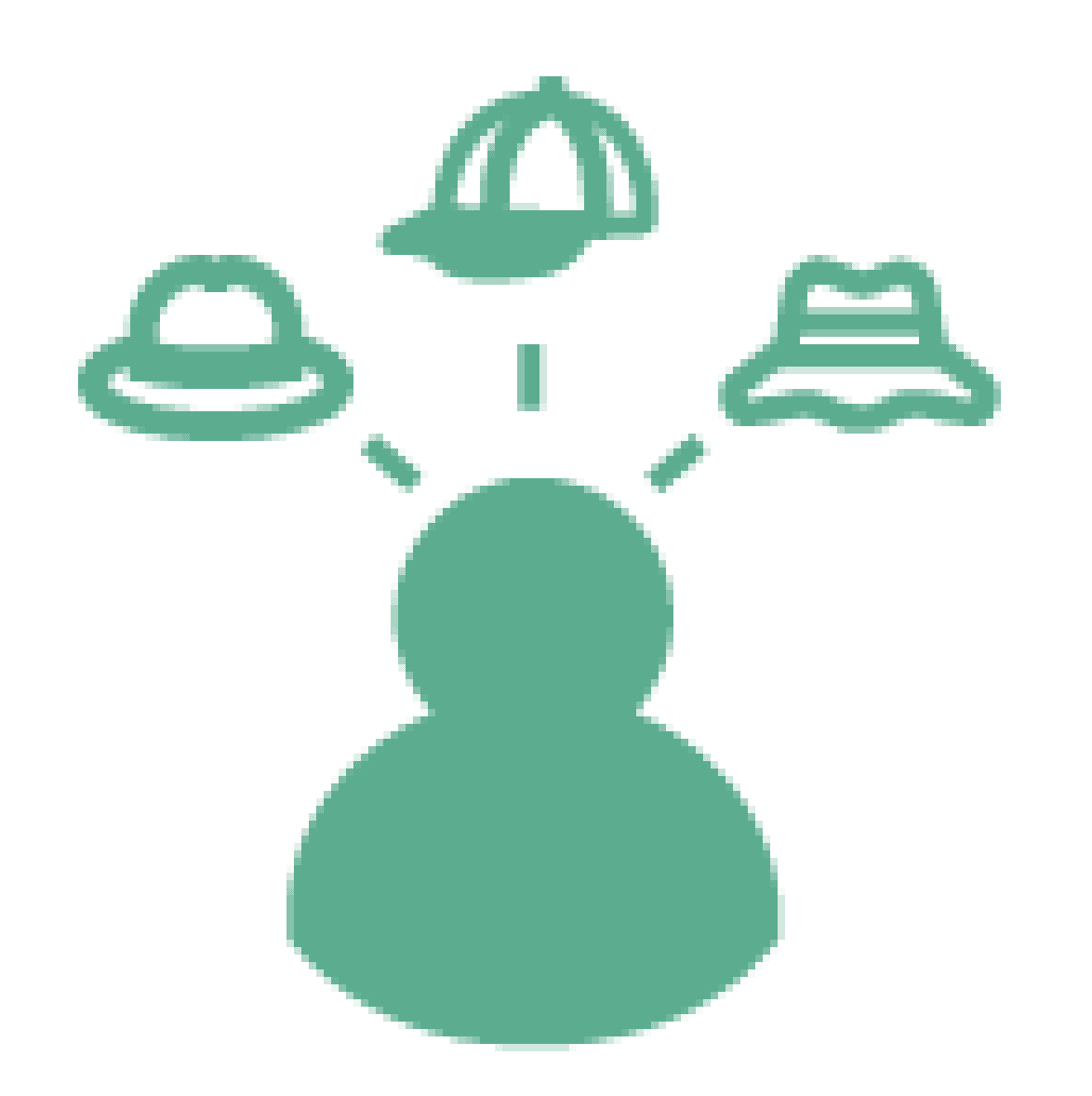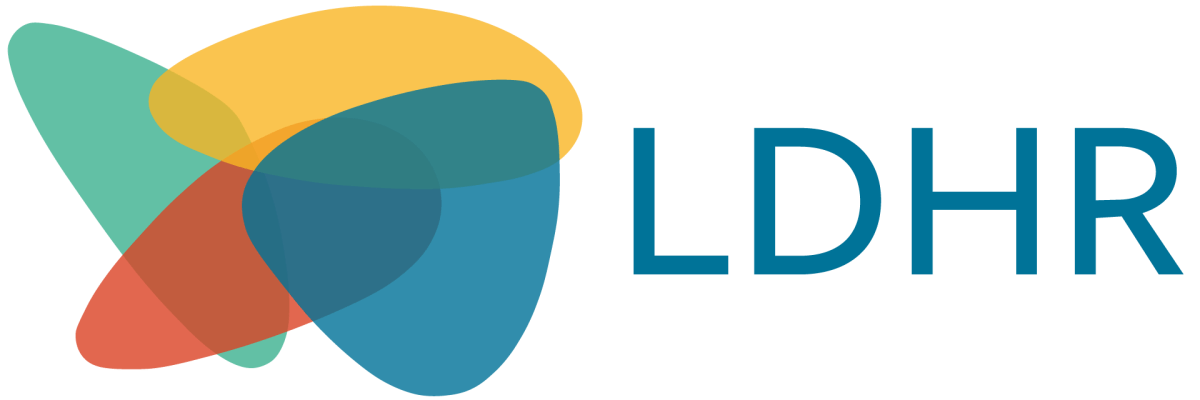
領袖架構
這份資源是從研究學園傳道會內部的一群高效能領袖而產生。基於我們的呼召,列出對我們機構的領袖而言最重要的因素是什麼,結合了我們對領袖在屬靈上和策略上的要求。
透過將此架構中的角色和責任應用在你的處境中,你可以在領袖的身分上成長和發展。請自由調整這些資源來幫助你的需要。



我們需要發展領袖。這是我們管家職分的一部分,神把人託付給我們,我們要幫助他們發揮最大潛能。同樣的,使命也需要不斷增長的領袖來回應現在及未來的情況。我們渴望每位隊員、門徒、或參與使命的人們都能持續成長像基督,增加他們服事和倍增的能力。
這份資源列出幾個領導的不同層面:
- 心 ─我們與神的關係
- 關係 ─品格和與人關係的品質
- 角色 ─我們的思考方式和行動
- 責任 ─或影響力技巧,依角色而異
- 結果/管家職分 ─衡量我們果效的類別
Each element of the Framework has:
- an 綜覽 that explains the purpose (outcomes) of the session, the key resonating ideas, and slides of the PowerPoint presentation, some preparation tips, and a review of the additional resources for the session. It will be helpful if you read this page first for each session.
- a slide Presentation that you can use or adapt to meet your needs. There are ample notes included in each presentation and interactive activities to facilitate learning.
- an Article (or a few) to read about the topic, and
- Additional Materials and resources for deeper study and understanding.
Overview: Leadership Framework Introduction (helpful session guide)
Presentation: Leadership Framework Introduction
The Heart of the Leader
Your relationship with God is central to your life and leadership. “For apart from Me, you can do nothing.” John 15:5
In the Bible, the core essence of the person is summed up in the word “heart.” We use the phrase, “heart of a leader,” to capture our relationship with God and the essential character and personal qualities essential to leadership.
Overview: Heart of the Leader (helpful session guide)
The Relationships of a Leader is the foundational category of our framework and flows from the “Heart” of the leader. Your personal character and qualities and your relationships with others form the base from which you lead.
Overview: The Relationships of the Leader (helpful session guide)
Presentation: The Relationships of a Leader
There are four roles in the Leadership Framework: Direction Setter, Change Agent, Coach, and Spokesperson. These four roles describe how you think and what you do as a leader.
The Direction Setter
A Direction Setter continually thinks about the future of the organization and about what needs to happen to accomplish the mission—to win, build, send, and multiply Christ-centered disciples who launch spiritual movements.
Overview: Direction Setter
Presentation: Direction Setter
Article: Strategic Planning Process
其他資源:
CCCI Global Direction
Article: Shaping our Future Together
Local Movement Indicators
Movement 360 Evaluation
Direction Setter Bible Study
The Change Agent
A Change Agent is responsible for leading the team in identifying and removing obstacles that might keep them from achieving the mission. This person looks ahead to new trends and opportunities and takes the time to lead the team in doing the evaluation, research, and testing that is required to keep the team on the cutting edge of accomplishing the mission. With creativity and attention to changes in the environment of the audience they are trying to reach, the Change Agent leads the adaptation to changing conditions in pursuit of mission and vision.
Overview: Change Agent
Presentation: Change Agent
Article: PrEFACE
Article: Leading Change-The Eight Stage Process Summary
其他資源:
Article: Vision-led Change
The OU Case Study
The Coach
In the Coach Role, the leader builds the team, ensures that the right person is doing the right job, creates an environment for growth, and coaches individual team members for growth and effectiveness for the mission, using coaching skills and processes.
Overview: Coach
Presentation: Coach
Coaching Bridge
團隊隊員的類型
Team Member Types Chart
其他資源:
Article: Effective Coaching
Article: How Jesus Developed People
The Spokesperson
The Spokesperson is responsible for communicating and representing the mission to those outside the organization or outside of your team. As Spokesperson, the leader takes the initiative to build a network and manages the various, crucial relationships that are essential to the mission.
Overview: Spokesperson
Presentation: Spokesperson
Paul Eshelman video: Spokesperson
Paul Eshelman talk notes: Spokesperson
其他資源:
Article: Principles of Partnership
Article: Keys to Effective Partnering
No matter which role you are operating from, there are four Responsibilities, or influence skills, needed in each role. For example, a leader in the Coach role will need to cast vision, have a strategy, align, and motivate people to be encouraged and equipped to live out the mission. These four Responsibilities are Aligning, Motivating, Vision Casting, and Strategy Formulation.
調整合一
Aligning is inviting others to join in through involvement or direct invitation; it is the ability to bring all of your people and structures together, pulling in the same direction, in order to carry out the strategies and accomplish the vision.
Overview: Aligning
Presentation: Aligning
Strategic Partner Analysis
Article: Building Alignment
激發鼓勵
Motivating is helping others push onward to reach the mission, even when it is difficult; it is shaping the morale of the team so there is positive energy for each person to maximize their contribution to the mission.
Overview: Motivating
Presentation: Motivating
其他資源
傳遞異象
Vision Casting is communicating to others a picture of the preferred future in an emotionally compelling way. What will it look like when the vision is achieved?
Overview: Vision Casting
Presentation: Vision Casting
Article: Catching, Cultivating, and Casting Vision
Article: The Leader as Painter
Article: Vision-led Charge
制定策略
Strategy Formulation is collaborating with team members, empowering them to develop significant actions or tactics for a plan to accomplish the mission; it is helping people know how to get to the goal.
Overview: Strategy Formulation
Presentation: Strategy Formulation
Article: Strategic vs Tactical Planning
Article: Strategic Formulation Focus
Results
Leaders pursue results. Results establish the categories for evaluating our effectiveness. Our vision is “Movements Everywhere”, and the Local Movement Indicators represent essential faith actions and fruit we are looking for to measure our progress toward our vision. Other levels of the organization have different measures according to the stewardship of that part of the organization.
Overview: Results (helpful session guide)
Presentation: Results
其他資源:
Article: Leading and Results
Article: Why Measure?
Article: Results Categories to Address
Case Study: The University of Oklahoma
Video: Three Critical Reasons Why We Measure Ministry – by Steve Douglass
Stewardship
Wise stewardship (Matthew 25) implies both good management and capacity growth for the future. Our under-girding assumption is that we, as organizational leaders, are stewards of all that is entrusted to us: our calling and direction, people, finances, technology, property, time, and talents.
Overview: Stewardship (helpful session guide)
Presentation: Stewardship
Article: The Leader as Steward
Article: The Steward Leader
我們需要發展領袖。這是我們管家職分的一部分,神把人託付給我們,我們要幫助他們發揮最大潛能。同樣的,使命也需要不斷增長的領袖來回應現在及未來的情況。我們渴望每位隊員、門徒、或參與使命的人們都能持續成長像基督,增加他們服事和倍增的能力。
這份資源列出幾個領導的不同層面:
- 心 ─我們與神的關係
- 關係 ─品格和與人關係的品質
- 角色 ─我們的思考方式和行動
- 責任 ─或影響力技巧,依角色而異
- 結果/管家職分 ─衡量我們果效的類別
Each element of the Framework has:
- an 綜覽 that explains the purpose (outcomes) of the session, the key resonating ideas, and slides of the PowerPoint presentation, some preparation tips, and a review of the additional resources for the session. It will be helpful if you read this page first for each session.
- a slide Presentation that you can use or adapt to meet your needs. There are ample notes included in each presentation and interactive activities to facilitate learning.
- an Article (or a few) to read about the topic, and
- Additional Materials and resources for deeper study and understanding.
Overview: Leadership Framework Introduction (helpful session guide)
Presentation: Leadership Framework Introduction
The Heart of the Leader
Your relationship with God is central to your life and leadership. “For apart from Me, you can do nothing.” John 15:5
In the Bible, the core essence of the person is summed up in the word “heart.” We use the phrase, “heart of a leader,” to capture our relationship with God and the essential character and personal qualities essential to leadership.
Overview: Heart of the Leader (helpful session guide)
The Relationships of a Leader is the foundational category of our framework and flows from the “Heart” of the leader. Your personal character and qualities and your relationships with others form the base from which you lead.
Overview: The Relationships of the Leader (helpful session guide)
Presentation: The Relationships of a Leader
There are four roles in the Leadership Framework: Direction Setter, Change Agent, Coach, and Spokesperson. These four roles describe how you think and what you do as a leader.
The Direction Setter
A Direction Setter continually thinks about the future of the organization and about what needs to happen to accomplish the mission—to win, build, send, and multiply Christ-centered disciples who launch spiritual movements.
Overview: Direction Setter
Presentation: Direction Setter
Article: Strategic Planning Process
其他資源:
CCCI Global Direction
Article: Shaping our Future Together
Local Movement Indicators
Movement 360 Evaluation
Direction Setter Bible Study
The Change Agent
A Change Agent is responsible for leading the team in identifying and removing obstacles that might keep them from achieving the mission. This person looks ahead to new trends and opportunities and takes the time to lead the team in doing the evaluation, research, and testing that is required to keep the team on the cutting edge of accomplishing the mission. With creativity and attention to changes in the environment of the audience they are trying to reach, the Change Agent leads the adaptation to changing conditions in pursuit of mission and vision.
Overview: Change Agent
Presentation: Change Agent
Article: PrEFACE
Article: Leading Change-The Eight Stage Process Summary
其他資源:
Article: Vision-led Change
The OU Case Study
The Coach
In the Coach Role, the leader builds the team, ensures that the right person is doing the right job, creates an environment for growth, and coaches individual team members for growth and effectiveness for the mission, using coaching skills and processes.
Overview: Coach
Presentation: Coach
Coaching Bridge
團隊隊員的類型
Team Member Types Chart
其他資源:
Article: Effective Coaching
Article: How Jesus Developed People
The Spokesperson
The Spokesperson is responsible for communicating and representing the mission to those outside the organization or outside of your team. As Spokesperson, the leader takes the initiative to build a network and manages the various, crucial relationships that are essential to the mission.
Overview: Spokesperson
Presentation: Spokesperson
Paul Eshelman video: Spokesperson
Paul Eshelman talk notes: Spokesperson
其他資源:
Article: Principles of Partnership
Article: Keys to Effective Partnering
No matter which role you are operating from, there are four Responsibilities, or influence skills, needed in each role. For example, a leader in the Coach role will need to cast vision, have a strategy, align, and motivate people to be encouraged and equipped to live out the mission. These four Responsibilities are: aligning, motivating, vision casting, and strategy formulation.
調整合一
Aligning is inviting others to join in through involvement or direct invitation; it is the ability to bring all of your people and structures together, pulling in the same direction, in order to carry out the strategies and accomplish the vision.
Overview: Aligning
Presentation: Aligning
Strategic Partner Analysis
Article: Building Alignment
激發鼓勵
Motivating is helping others push onward to reach the mission, even when it is difficult; it is shaping the morale of the team so there is positive energy for each person to maximize their contribution to the mission.
Overview: Motivating
Presentation: Motivating
其他資源
傳遞異象
Vision Casting is communicating to others a picture of the preferred future in an emotionally compelling way. What will it look like when the vision is achieved?
Overview: Vision Casting
Presentation: Vision Casting
Article: Catching, Cultivating, and Casting Vision
Article: The Leader as Painter
Article: Vision-led Charge
制定策略
Strategy Formulation is collaborating with team members, empowering them to develop significant actions or tactics for a plan to accomplish the mission; it is helping people know how to get to the goal.
Overview: Strategy Formulation
Presentation: Strategy Formulation
Article: Strategic vs Tactical Planning
Article: Strategic Formulation Focus
Results
Leaders pursue results. Results establish the categories for evaluating our effectiveness. Our vision is “Movements Everywhere”, and the Local Movement Indicators represent essential faith actions and fruit we are looking for to measure our progress toward our vision. Other levels of the organization have different measures according to the stewardship of that part of the organization.
Overview: Results (helpful session guide)
Presentation: Results
其他資源:
Article: Leading and Results
Article: Why Measure?
Article: Results Categories to Address
Case Study: The University of Oklahoma
Video: Three Critical Reasons Why We Measure Ministry – by Steve Douglass
Stewardship
Wise stewardship (Matthew 25) implies both good management and capacity growth for the future. Our under-girding assumption is that we, as organizational leaders, are stewards of all that is entrusted to us: our calling and direction, people, finances, technology, property, time, and talents.
Overview: Stewardship (helpful session guide)
Presentation: Stewardship
Article: The Leader as Steward
Article: The Steward Leader
相關資源
不確定怎樣進行下一步?你可以瀏覽一下其他部分的發展資源。

你在LDHR的頭100天
Your First 100 Days in LDHR This PDF-based online course consists of 14 weekly sessions that will help you develop foundational knowledge for operating as
精選工具
幫助你學習如何運用這些工具來發展建立運動的領袖
個人發展計畫
A step-by-step worksheet to help you describe areas for growth, set clear goals, and consider different methods and opportunities to create and implement a development plan
Growth Model
A proven "recipe" for growth in greater self-awareness and self-management skills using context, principles and case studies
Learning as a Lifestyle
Practice these four habits and develop a lifestyle of continual learning
30天的回饋之旅
Tips and activities to encourage you and your team in giving and inviting feedback

